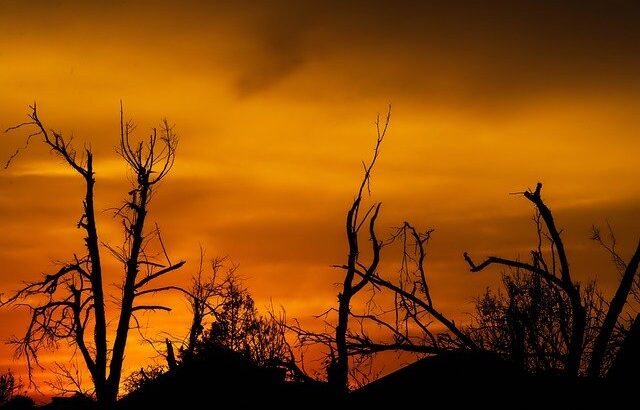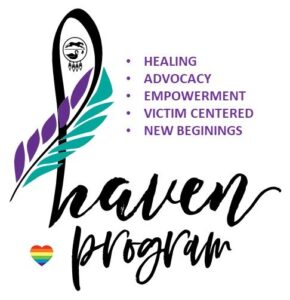H.A.V.E.N. Update
By Cathleen Osborne-Gowey (Program Admin – Crime Victim Advocate) 541.602.0616 or COsbornegowey@estoo.net
Program Update:
Hello all –
We hope this article finds you all well. It’s been a busy time for our department. We’ve recently found out that we were invited to apply for the 2021 Office for Victims of Crime Tribal Set Aside grant, which will allow our program to employ a full-time court advocate to help clients with the difficult court system and processes as well as find a specific lawyer (who understands our clients’ needs and who can provide consistent legal assistance) to refer our clients too. We’ve also been putting together the FY 21 Office on Violence Against Women grant that will allow our program to continue to provide our much-needed Transitional Housing Program. We’re grateful for these funding opportunities and the services they will provide for all ESTOO victims of crime.
May is Missing and Murdered Indigenous Women and Girls Month
Social media does a great job at putting acronyms and images out but does not give us the full picture of what they mean. One of those is MMIW and MMIWG. We see images of Native women with the phrase MMIW on Facebook and we wonder…what does that mean? Does that happen here in Oklahoma? Is that just something that happens in rural Canada? The answer is YES…missing and murdered indigenous women and girls happens in Canada, it happens on rural reservations in Wyoming, North Dakota, in every state, and in Ottawa County Oklahoma. To get a better picture of the issue here in Oklahoma, I’d like us to listen to the voice of a family dealing the loss of someone they love here in Oklahoma. This is sections of an article published in the Oklahoman on July 17, 2019. Please read the article below, listen to this family’s story, and let’s learn what MMIW really means.
Missing in Oklahoma: State could take steps to curb ‘epidemic’ of missing Native American women
By Carmen forman and Jana Allen
Rebecca Ponkilla still remembers the last moment she saw her daughter. She hugged Ida Beard inside their El Reno home as her daughter’s friends waited for her outside. Beard, 29, walked to a friend’s house just blocks away, but never returned home. A member of the Cheyenne and Arapaho Tribes, Beard is one of many Native American women and girls across the country who have vanished without a trace.
Oklahoma has one of the highest rates of missing or murdered Native American women, according to a report from the Urban Indian Health Institute.
But the report doesn’t show a complete picture of the problem because of a widespread lack of comprehensive data. As indigenous people have become increasingly more vocal about the alarming trend that has silently plagued the Native American community for decades, one Oklahoma lawmaker wants to see what the state can do to help. When Beard didn’t make it home later on June 30, 2015, Ponkilla assumed her daughter was having fun with her friends. But then she began to worry. “I had no idea, no idea where she was,” she said. “I still really can’t believe she’s gone, you know?” Over the years, the El Reno police never received any substantial leads on Beard’s disappearance, said LaRenda Morgan, Beard’s cousin. Beard’s family hasn’t given up. They recently hired a private investigator to look at the case, Morgan said. But the uncertainty surrounding Beard’s disappearance and the lack of closure haunts her family, especially her younger sister, Zina Deere. The two were nearly inseparable, and Beard always looked after Deere.
Deere, 27, regrets she wasn’t with her sister that night. “We would’ve helped each other,” she said. “But whatever happened to her, she was by herself.” At the time of her disappearance, Beard’s children were ages 5, 6, 8 and 14. Her oldest daughter now has a child of her own who may never get to meet her grandmother. “We won’t stop looking and waiting for her to come through the door until we know what really happened to her,” Ponkilla said through tears. Beard’s family is not alone.
An epidemic of violence
Linda “Lindy” Zotigh, also a member of the Cheyenne and Arapaho Tribes, was brutally killed in 2017 in Hammon. A federal grand jury indicted Zotigh’s boyfriend, Tommy Dean Bullcoming, last year on first-degree premeditated murder, first-degree felony murder and other charges related to her death. Bullcoming is accused of stabbing Zotigh, 55, which led to her death, “in an especially heinous, cruel and depraved manner in that the offense involved torture and serious physical abuse,” according to court documents. The case is still ongoing. Bullcoming killed Zotigh because she tried to leave him, said Imogene Herndon, Zotigh’s friend.
“He actually treated her pretty good,” Herndon said. “Since he seemed like such a kind, quiet man and was nice looking, you would never dream there was this demon in him. Authorities from the Roger Mills County sheriff’s office and the Oklahoma Highway Patrol found Zotigh’s body on Sept. 7, 2017, on tribal land about seven miles from where her mobile home had been set on fire — the catalyst for the search. Law enforcement detained Bullcoming the following day on an unrelated drug charge. Herndon, 60, describing an incident where she previously was stalked by a man, said she hates how Native American women always seem to get blamed for the violence they face.“They keep putting it on the women,” she said. “It’s these men they need to do something with.”
Native American and Alaska Native women face higher rates of violence than the general populace with more than four out of five indigenous women experiencing some type of violence in their lifetime…
according to a study from the National Institute of Justice. That violence can include stalking, sexual violence or physical or psychological aggression by an intimate partner. Overall, more than 1.5 million American Indian and Alaska Native women have experienced violence in their lifetime, which contributes to the epidemic of missing and murdered indigenous women and girls, according to the study. “There are domestic violence relationships that continue to escalate and a lot of times the most dangerous times of the relationship are when the individual attempts to report to the police, to leave, to get a divorce. … Statistics show that that’s when those events occur,” she said.
According to the urban institute report, 5,712 cases of missing American Indian and Alaska Native women and girls were reported to the National Crime Information Center in 2016 alone.
When violence boils over, limited law enforcement and jurisdictional issues can complicate matters. Depending on where a crime is committed, different law enforcement agencies could take the lead on the case, said Carr, who also works for the StrongHearts Native Helpline. And the lack of a centralized missing and murdered indigenous persons database that can be used across all law enforcement entities doesn’t help matters, she said. “There’s a lot of miscommunication between the databases and then a misunderstanding of who is responsible for an individual who went missing in location X,” Carr said. “There’s a lot of jurisdictional confusion.”
Native American tribes also lack the authority to prosecute most of the crimes that occur on their land because federal law places most major crimes under federal jurisdiction, she said. That’s part of the problem, Carr said.
Federal authorities have exclusive jurisdiction over sexual assault or sexual violence cases, but oftentimes, resources are so limited they can only pursue the most egregious of cases, she said. That leads to a vicious cycle where many perpetrators continue to do what they’re doing because they know they can get away with it, Carr said.
Sovereignty and jurisdiction barriers
Part of the problem stems from a confusion about which government entity — local, state, federal or tribal — should investigate the disappearance or murder of tribal members. Oklahoma officials have taken longer to dive into this issue because the state has a more complicated landscape than some other states, Word said. The sheer number of tribes in Oklahoma — the state has nearly 40 federally recognized tribes — and the fact that they’re spread across the state makes it harder for the tribes to communicate and coordinate with one another.
Invisible to the media
Along with insufficient data on missing and murdered indigenous women, there also is a lack of media coverage. Of the 506 cases the urban institute studied, only 129 received media coverage. About 7% of the cases made up more than half the coverage.
Part of the reason there are so many missing indigenous women is that it’s “an unknown issue,” Webster said.
When Beard went missing, Morgan said she and several of her relatives reached out to media outlets to ask them to cover it. None did, she said. More women could be found sooner if the media reported each time a Native American woman went missing, she said. “If (people) knew someone was missing from that location, they could call in and give information,” Morgan said. “Nobody knows until afterward when bodies are found.”
And every time the family hears of a body found, they’re on “pins and needles” waiting to see whether it’s Beard, Morgan said. Beard’s family has lost and found their strength over the years. “We really fell into depression over the years where we would sleep all day, (we) wouldn’t get up to eat sometimes,” Deere said. But now, Deere said she knows Beard wouldn’t want that for her family. There are two things that keep her going.
“Hope and faith,” she said. “Because hope gives me some kind of joy, knowing that maybe she’ll come back. My faith is knowing what happened, happened. And I believe I’ll see her again.”
Contact Haven to discuss any questions you might have we’re always here to listen and help walk you through the next steps.
If you are able please call or see the messaging links above:
Haven Office: 918-554-2836
Text Line: 918.533.3070
Crime Victim Advocate: 541.602.0616
Program Website: https://havenprogram.com/
Program Email: havenprogram@estoo.net
Facebook: HAVEN Tribal Program, Twitter: @ProgramHaven, Instagram: HAVENTRIBALProgram.
Our advocates are here to help!





